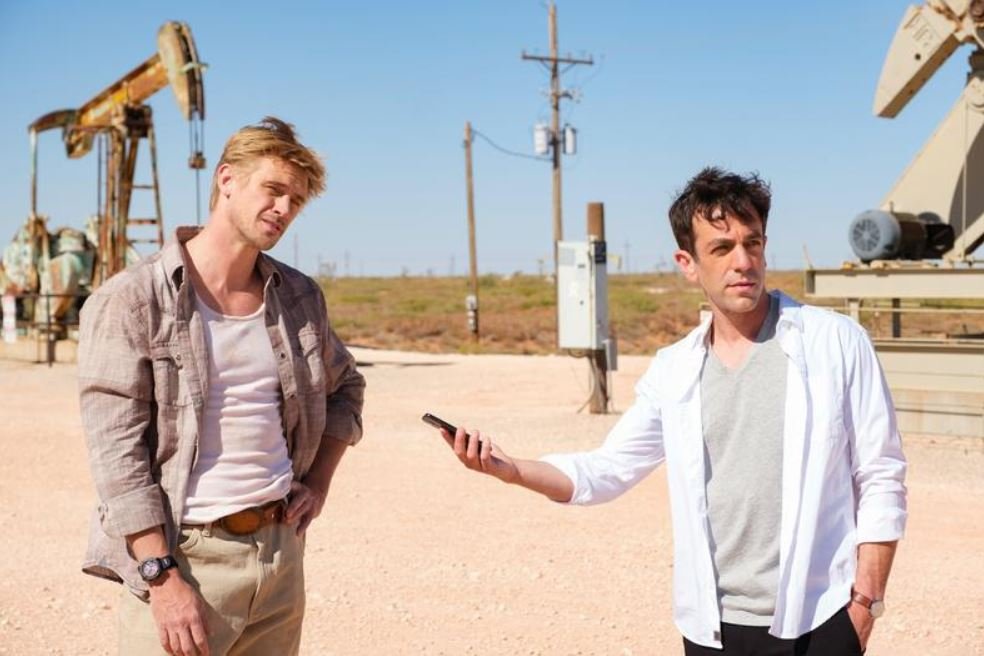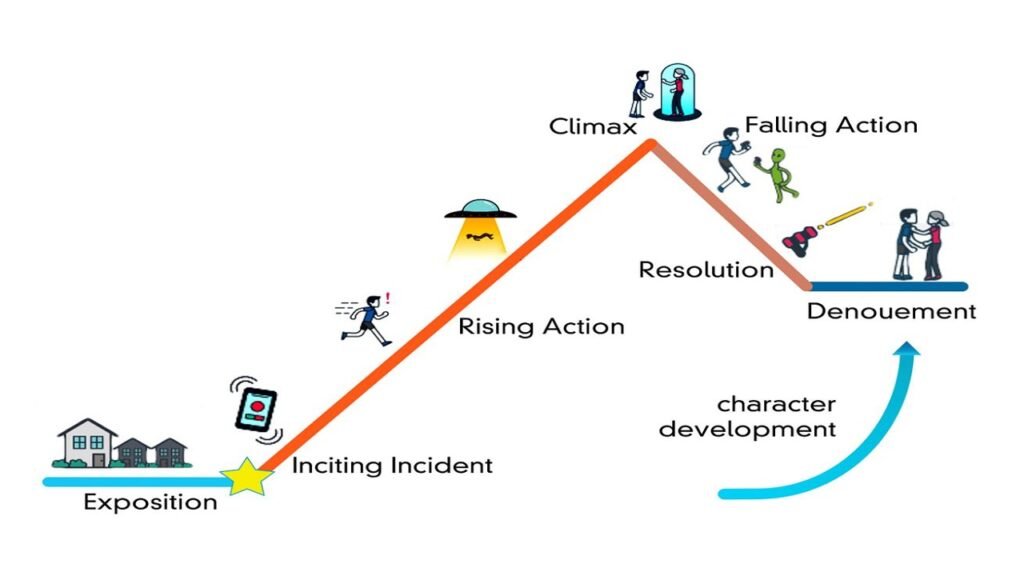Rising action is widely regarded as one of the key elements of a plot in any screenplay or script. As an engaging and suspense-driven component that appears early in the narrative, rising action typically launches the main sequence of events and much of the story’s momentum.
What is rising action?
The rising action is the part of the plot that builds up to the climax, intensifying the tension created by the story’s main conflict. This segment of a story paves the way toward the most thrilling moment – the climax. It includes:
- Inciting event(s): Rising action usually begins after the inciting event, that pivotal turning point where there’s no going back. This moment sets the stage for the core or “meat” of the story.
- Introduction of conflict: This part of the story lays down challenges, conflicts, or mysteries for the main character(s) to face. Often seen as the narrative’s driving force, it gives insight into the characters’ motivations, beliefs, ambitions, and goals.
- Pre-climax: When done well, rising action enhances the emotional and dramatic payoff of a story’s climax. It heightens tension and deepens the audience’s connection to the characters, making the climax all the more impactful.
Rising action should lead seamlessly to the story’s climax, incorporating engaging subplots to captivate your audience.
How rising action fits into story structure

Rising action in a narrative takes place after the exposition and is triggered by the inciting incident. Most stories follow a typical structure like this:
- Exposition: Introduces the characters and establishes the stakes that make their story meaningful.
- Inciting incident: A triggering event that compels the character to take action.
- Rising action: Builds tension and suspense in response to the catalyst.
- Climax: The story’s peak moment of conflict, often with dire consequences for the protagonist.
- Resolution: Wraps up the story, tying together all its loose ends.
Here’s how these elements appear in the film Mean Girls:
- Exposition: We meet Cady, a teen who’s been homeschooled and is stepping into the world of public school for the first time.
- Inciting incident: Cady and her friends Janis and Damian hatch a plan to infiltrate “the Plastics,” a clique led by the queen bee, Regina George.
- Rising action: As Cady grows close to the Plastics, she develops a crush on Regina’s ex, Aaron Samuels, leading to increasing tensions until she’s eventually exposed.
- Climax: Regina takes revenge by publishing the burn book and framing Cady and the Plastics. Soon after, Regina is dramatically hit by a bus.
- Resolution: The female students of the school band together to create a more supportive environment.
While this structure is consistent, its application can vary across genres. In sci-fi or crime films, rising action often focuses on establishing conflict quickly. On the other hand, in a romance, the rising action may revolve entirely around the journey of two characters falling in love, leading up to the emotional climax of their story.
Regardless of the genre, rising action always sets the stage for the climax.
Why is rising action important?

Rising action plays a vital role in storytelling because it:
- Connects characters with conflict: It forms the bridge between the characters and the central conflict, allowing the audience to undersatand their motivations, challenges, and personal stakes. This connection highlights the obstacles the characters must navigate.
- Builds tension: Rising action sets the foundation for the story’s climax by increasing suspense and raising the stakes . It’s a critical component that ensures the plot adheres to traditional story structure.
Examples of rising action
Here are three examples that illustrate how rising action integrates into a film’s overall narrative (spoilers ahead!):
1. Mad Max: Fury Road
Director George Miller presents a literal and visual representation of rising action through the escalating obstacles faced by Max and Furiosa.
The story kicks off when Furiosa escapes the citadel with Immortan Joe’s wives. What follows is a series of intense chases and escalating action sequences, all building to the climactic final race back to the citadel.
Each challenge adds more complexity and emotional intensity, keeping the audience on edge.
2. Romeo + Juliet
Writers Craig Pearce and Baz Luhrmann deliver a textbook example of rising action to heighten conflict and tension. The inciting incident – a gas station shootout between the Montagues and Capulets – establishes the deep feud between the families.
The rising action unfolds on two fronts: the ongoing feud and the forbidden love between Romeo and Juliet. These events culminate in two climaxes – Romeo killing Tybalt and the tragic dual suicide of the lovers.
Luhrmann’s adaptation amplifies Shakespeare’s rising action to create high stakes and cinematic tension.
3. Die Hard
The rising action begins when Hans Gruber and his crew take control of Nakatomi Plaza with John McClane trapped inside. From there, the tension mounts as McClane works to foil the terrorists’ plan, leading to the explosive climax on the rooftop.
Along the way, the film layers suspense through McClane’s daring stunts, bare-footed gunfights, and clever strategies, showcasing his resilience and resourcefulness against overwhelming odds.
Tips for writing rising action
- Place rising action after the opening act: It should come after the introduction of your main character and the stakes, giving the audience a clear view of the challenges and objectives they’ll face.
- Kick off with an inciting incident: Rising action generally begins with an event that sparks the main conflict and introduces hurdles for the character(s) to overcome.
- Build momentum toward the climax: Use the rising action to steadily ramp up the tension. Introduce multiple narrative subplots to keep your reader or viewer engaged and curious.
- Develop character depth: Rising action is an excellent opportunity to reveal your characters’ motivations, beliefs, and internal struggles. Ask yourself: What’s holding them back from their goals? How can you evolve this conflict to heighten the tension? Does the conflict have a personal impact on them?
- Raise the stakes with external conflicts: Whenever possible, tie your rising action to external pressures that amplify the stakes for your characters.
Now, it’s time to put these tips into action and create stories that keep your audience on the edge of their seats!
Our next post is on how to get into the film industry





